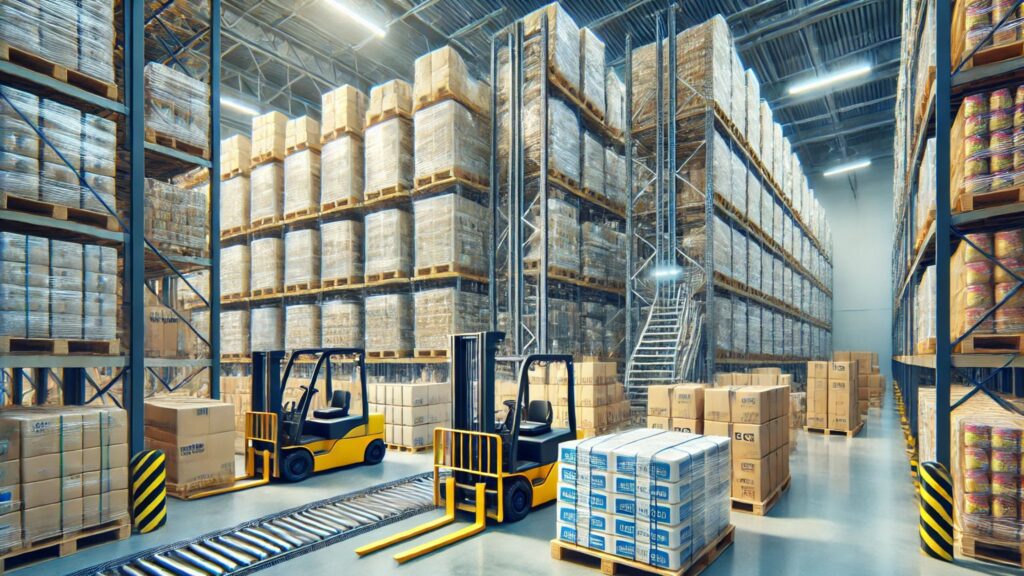When we think about food packaging, our minds often jump to the primary and secondary layers—the ones we directly interact with in stores. However, an equally crucial yet often overlooked aspect is tertiary food packaging. This level of packaging plays a vital role in ensuring that food products reach their final destination safely and efficiently.
What is Tertiary Food Packaging?
Tertiary food packaging refers to the outermost layer of packaging that is used for bulk handling, transportation, and storage. It is designed to protect multiple units of secondary packaging, ensuring that food products are not damaged during transit. Unlike primary packaging (which comes in direct contact with food) or secondary packaging (which groups primary packages together), tertiary packaging is essential for logistical purposes.
Types of Tertiary Food Packaging
- Corrugated Boxes – These are widely used for their durability and ability to protect contents from external forces.
- Pallets and Slip Sheets – Pallets allow for easier stacking and transportation of multiple boxes, while slip sheets help separate and stabilize loads.
- Shrink Wrap and Stretch Film – Used to secure and protect products on pallets, preventing movement and potential damage.
- Crates and Bins – Ideal for transporting perishable food items such as fruits and vegetables.
- Intermediate Bulk Containers (IBCs) – These are used for liquid or bulk food storage, offering both durability and ease of transport.
Importance of Tertiary Food Packaging
- Protection & Preservation: It shields food products from external contaminants, physical damage, and adverse environmental conditions.
- Efficiency in Logistics: Proper tertiary packaging enables streamlined transportation, reducing costs and minimizing waste.
- Sustainability: Many companies are now opting for eco-friendly tertiary packaging solutions, including recyclable and reusable materials.
- Compliance with Regulations: Food safety regulations often mandate proper tertiary packaging to ensure hygiene and quality control during transportation.
Future Trends in Tertiary Food Packaging
- Smart Packaging: Technologies like RFID (Radio Frequency Identification) and QR codes are being integrated into tertiary packaging to improve traceability and inventory management.
- Sustainable Materials: The industry is shifting towards biodegradable, compostable, and recyclable packaging solutions to reduce environmental impact.
- Automation in Packaging: The use of robotics and AI-driven logistics is enhancing the efficiency of tertiary packaging operations.
Conclusion
While consumers may not directly see tertiary food packaging, it plays an indispensable role in the food supply chain. By improving efficiency, ensuring safety, and embracing sustainability, tertiary packaging continues to evolve to meet the growing demands of the food industry. Understanding its significance can help businesses optimize their operations and contribute to a more sustainable and effective food distribution system.
Related Articles
- The Art and Science of Packaging | Trends, History & Future
- Tertiary Packaging in Pharmaceutical Industry: An Essential Component of Supply Chain Efficiency
- Understanding Primary Secondary and Tertiary Packaging
- Tertiary Packaging Examples: Understanding Its Role in Logistics
- What is Tertiary Packaging? Definition, Purpose, and Benefits
- The Importance of Secondary Packaging Material in Modern Supply Chains
- Secondary Packaging Examples: Enhancing Protection and Presentation
- Primary and Secondary Packaging: Understanding Their Roles and Importance
- The Importance of Secondary Packaging Machinery in Modern Manufacturing
- Secondary Packaging in Pharmaceutical Industry: Importance & Innovations

